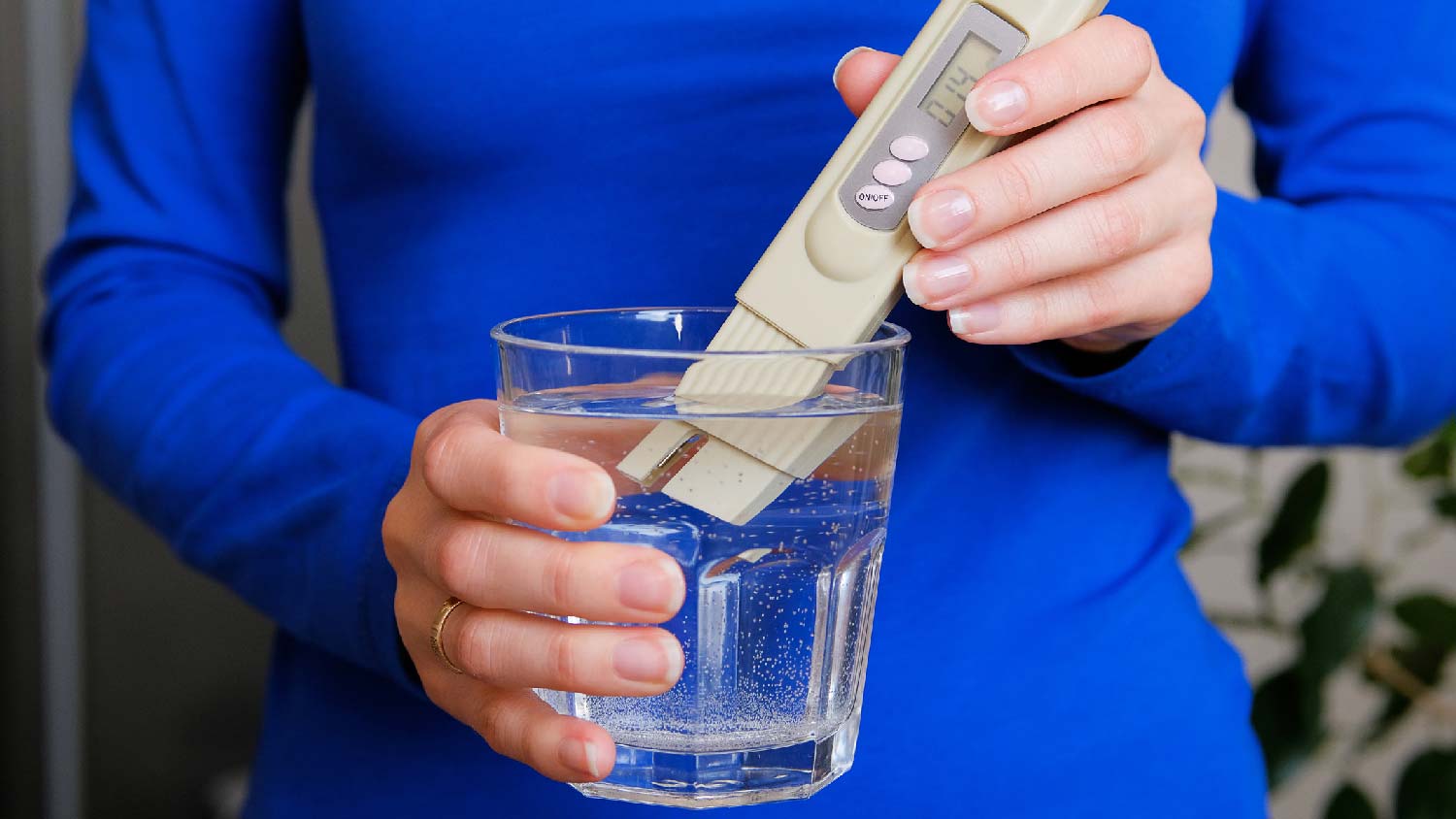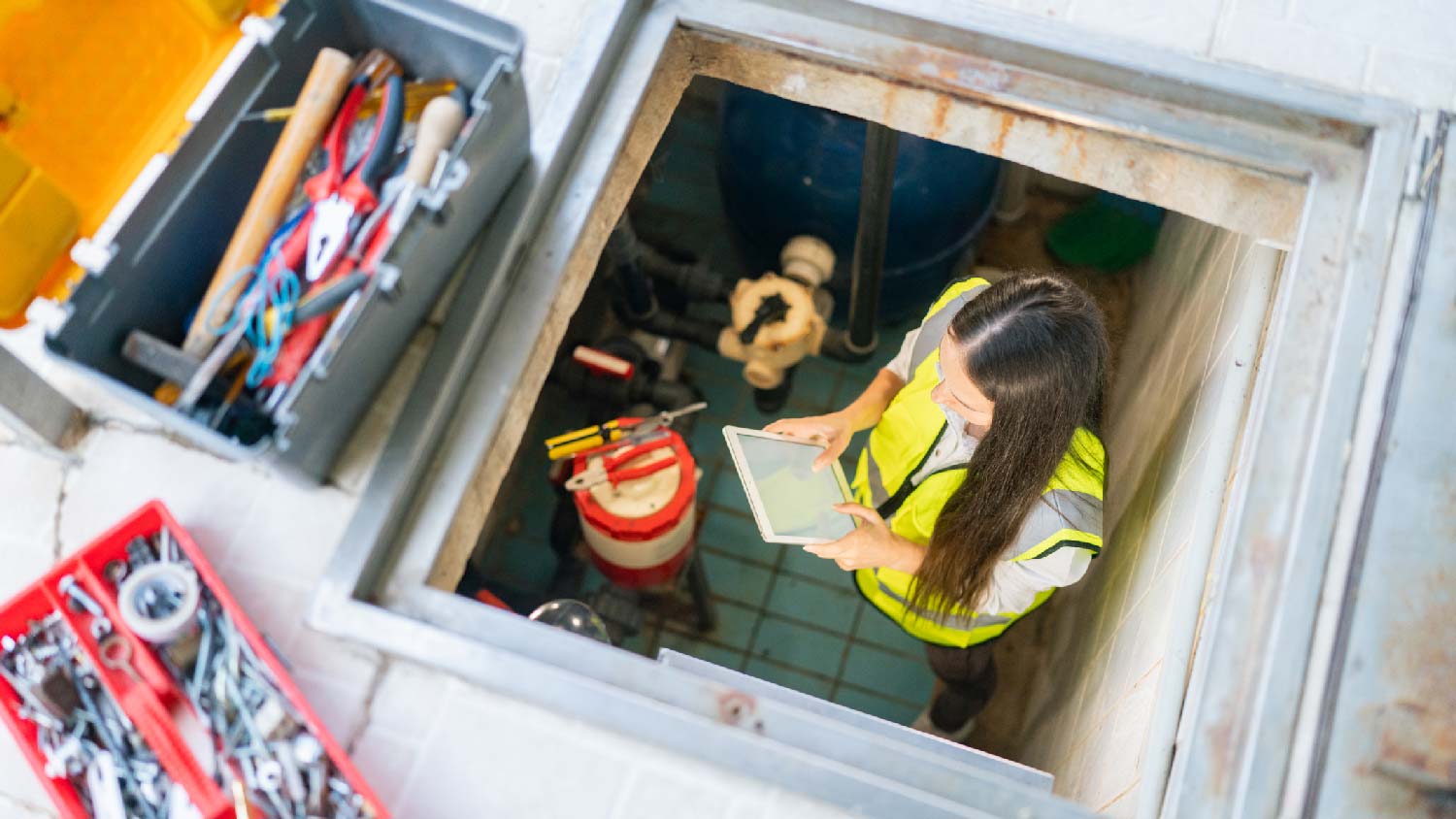Why Is My Bath Water Blue? 4 Reasons Why
Soak up some knowledge while learning how to fix this problem


Most blue bath water causes are simple to diagnose.
For safety reasons, don’t drink the water until you remedy the issue.
A pro will need to address any issue that requires plumbing adjustment.
1. Light Reflection
The first cause of blue bath water isn't blue water at all but a trick of the eye due to how water reflects light. For pure white bathtubs, light (especially bluish light) reflects off the surface, making the water appear bluer than it actually is. This effect is amplified if there's anything blue in or even near your bathtub, such as a rubber drain, shampoo bottle, hanging towel, or loofah.
How to Fix It
Remove all blue items from the room, including items in the tub.
Consider light reflecting off blue or pure white tiles.
Switch out the light bulb in the room for a red one and see if the problem persists.
Consider the time of day as sunrise and sunset have the most blue light.
2. Copper
Copper levels might be elevated in your water supply. There are a few reasons for this, but the most common one is older copper pipes. Over time, these pipes begin to break down and leak copper into the water supply. You may not notice this in shallow water such as in cooking pots or drinking glasses. It may only be visible in deeper water, like in a bathtub.
How to Fix It
See if your pipes are made of copper.
If they are, try flushing the pipes for 10 minutes to see if the problem is temporary.
If the water is still blue, you need to test the water.
In cases of copper corrosion, you may need to either add a filter or fix or replace the copper pipe.
3. Low pH

The acidity of your water plays a large role in its color. While this problem is connected to the copper section above, they are two different issues. A low pH could cause corrosion of the pipes, leading to the release of blue-colored copper particles, but copper pipes could also degrade without acidic water.
When you test for copper levels, there will usually be a pH marker on the test strip telling you how acidic your water should be. Be aware that there is a range of acceptable pH levels, as certain cities (or wells) will have different ideas of what normal acidity means. A pH of around 7 is ideal.
How to Fix It
A home test kit is a quick and easy way to test pH. Make sure to take multiple samples from different faucets.
A water softener can neutralize pH.
Test the water coming into your home from the city or well. Call the city if you’re hooked into the municipal system.
4. Cross-Connection
This isn’t the connection you want. When water is cross-connected, it means that water from your pool, toilet, hot tub, etc. has merged with your drinking water supply. This can introduce chemicals that turn your water blue, and it’s the least safe issue on this list—and the only one that needs to be addressed immediately.
How to Fix It
Call a pro. This isn’t a DIY project.
The pro may install things like backup preventers or divert the water supply.
When to Call a Pro

Call a plumber near you right away if you think you might have cross-connected water. Some other reasons to call a pro are:
If the blue tint hasn’t gone away with a flush cycle or 24 hours.
If you notice other signs of water quality dropping.
If you notice older-looking pipes in your home.
If there are any water pressure problems.
If you notice any health issues like skin irritation.
Frequently Asked Questions
While water can be colored gray, there is a different meaning for the actual term greywater. Greywater in this context refers to water that’s generated from your home and flushed into the dirty water system. It’s important to note that greywater is a category of water in your home. There is clean water, which is safe to drink, and blackwater, which is water contaminated with toxins. Blackwater comes from your toilet.
You can do more with a home test kit than just check your water’s hardness. There are a few types of tests. The first one is simple and involves a strip that checks your water’s pH balance. The second and more thorough option is a master test kit, which shows your pH plus the presence of nitrite, ammonia, and other elements through color shades. Unsurprisingly, the most thorough test is one you send to a proper lab for analysis
A water softener removes minerals from your drinking water and can make your house water softer. These softeners are designed to extend the lifetime of your plumbing system while also making water safer and more palatable for drinking. Hard water, which is water with a heavy amount of suspended particles, can also cause hair damage, skin irritation, and buildup in your pipes.





- Gas Plumbers
- Plumbing Repairs
- Sump Pump Installation
- Wood & Pellet Stove Repair
- Shower Repair
- Wood Stove Services
- Emergency Plumbers
- Fire Sprinkler Contractors
- Perc Test Companies
- Toilet Repair & Installation
- Boiler Repair
- Sewer Line Repair
- Faucet Repair
- Main Drain Camera Companies
- Foundation Drain Installation
- French Drains
- Bathtub Replacement
- Subcontractors
- Storm Drain Contractors
- Affordable Plumbing
- Plumbing & Heating Companies
- Bathroom Repair Services
- Sink Installation
- Commercial Plumber
- Barndominium Builders
- Water Line Repair
- Faucet Installation
- Water Line Installation
- Leak Detection










